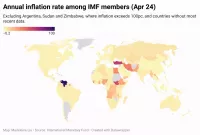Piracy is robbery or criminal violence at sea, typically targeting ships or coastal areas to steal cargo, valuables, or take hostages. Pirates use pirate ships to conduct these acts. Piracy dates back to the 14th century BC with the Sea Peoples. Narrow shipping channels have historically provided opportunities for piracy, privateering, and commerce raiding.
1909: Penalty for piracy
By 1909 the penalty for piracy was life imprisonment.
1911: Publication of Peter Pan
In 1911, J.M. Barrie's novel Peter Pan popularized pirate culture inventions such as "walking the plank" and helped define the fictional pirate archetype through Captain Hook and his crew.
1932: League of Nations Adopts Convention on Piracy
In 1932, the League of Nations adopted a Convention on Piracy, which initiated the ongoing debate, even with the Harvard Draft, about defining what constitutes piracy.
1950: Disney's film adaptation of Treasure Island
In 1950, English actor Robert Newton's portrayal of Long John Silver in Disney's film adaptation also helped define the modern rendition of a pirate, including the stereotypical West Country "pirate accent".
1953: Publication of Piracy was a Business
In 1953, Cyrus Karraker's study "Piracy was a Business" discussed pirates in terms of contemporary racketeering.
April 29, 1958: Convention on the High Seas Signed at Geneva
On April 29, 1958, the Convention on the High Seas was signed at Geneva. Articles 15 to 17 contained the definition of piracy, which was drafted by the International Law Commission.
1971: Cameron v HM Advocate
In 1971, the High Court of Justiciary said that that Schedule supplemented the existing law and did not seek to restrict the scope of the offence of piracy jure gentium, in the case of Cameron v HM Advocate.
1981: Senior Courts Act
In 1981, section 46(2) of the Senior Courts Act 1981 came into effect.
1982: UNCLOS Definition of Piracy
In 1982, Articles 101 to 103 of the United Nations Convention on the Law of the Sea (UNCLOS) contained a definition of piracy iure gentium according to international law.
1982: Aviation Security Act
In 1982, section 5 of the Aviation Security Act 1982 came into effect.
1985: Hijacking of the Achille Lauro
In 1985, the Italian civilian passenger ship Achille Lauro was hijacked by the Palestine Liberation Organization, which is regarded as an act of piracy.
1995: Pirate attacks statistics
Since 1995, the International Maritime Bureau (IMB) maintains statistics regarding pirate attacks.
1997: Merchant Shipping and Maritime Security Act
In 1997, section 26 of, and Schedule 5 to, the Merchant Shipping and Maritime Security Act 1997 replaced the Schedule to the Tokyo Convention Act 1967.
1998: Publication of The Invisible Hook
In 1998, the book "The Invisible Hook: The Hidden Economics of Pirates" by Peter T. Leeson was published.
2001: Death of Sir Peter Blake
In 2001, Sir Peter Blake, a New Zealand world champion yachtsman, was killed by pirates on the Amazon River.
2003: Pirates of the Caribbean film franchise begins
In 2003, the Pirates of the Caribbean film franchise began, further stereotyping and popularizing pirates of the "golden age".
2004: Worldwide losses due to piracy
In 2004, estimated worldwide losses due to seaborne piracy against transport vessels amounted to US$16 billion.
2004: Mortality rates for merchant sailors
In 2004, merchant sailors suffered mortality rates as high or higher than the slaves being transported due to poor living conditions, according to Rediker.
November 2005: Attack against the Seabourn Spirit
In November 2005, the German-built cruise ship the Seabourn Spirit was attacked offshore of Somalia by pirates armed with automatic firearms and an RPG.
November 2006: Formation of the Regional Cooperation Agreement on Combating Piracy
In November 2006, the Regional Cooperation Agreement on Combating Piracy and Armed Robbery against Ships in Asia was formed.
2006: Hostage-taking in pirate attacks
In 2006, there were 239 pirate attacks, with 77 crew members kidnapped and 188 taken hostage, but only 15 attacks resulted in murder.
2007: Increase in pirate attacks
In 2007, pirate attacks rose by 10 percent to 263 attacks, with a 35 percent increase on reported attacks involving guns and 64 crew members injured.
2008: Value of Spanish frigate Hermione capture
In 2008 dollars, each seaman netted $1.4 million from the capture of the Spanish frigate Hermione in 1762.
2008: VSOS becomes first authorized armed maritime security company
In 2008, VSOS became the first authorized armed maritime security company to operate in the Indian Ocean region.
2008: Gun use in pirate attacks
In 2008, gun use in pirate attacks recorded 76 cases.
2008: British Foreign Office advice on detaining pirates
In 2008, the British Foreign Office advised the Royal Navy not to detain pirates of certain nationalities as they might be able to claim asylum in Britain under British human rights legislation.
2008: Annual earnings of Somali pirates
Since 2008, Somali pirates centered in the Gulf of Aden made about $120 million annually.
September 2009: Increase in pirate attacks in Gulf of Aden and off Somalia
Between January and September 2009, pirate attacks rose to 306, with pirates boarding vessels in 114 cases and hijacking 34 of them. Gun use in pirate attacks increased to 176 cases.
2009: International Legal Dimension of Terrorism
A 2009 book entitled International Legal Dimension of Terrorism called the attackers "terrorists".
2010: United States v. Said ruling
Citing the United States Supreme Court decision in the 1820 case of United States v. Smith, a U.S. District Court ruled in 2010 in the case of United States v. Said that the definition of piracy under section 1651 is confined to "robbery at sea".
2010: Captured ships by pirates
In 2010, 27 ships were captured by pirates.
2011: Captured ships by pirates
In 2011, 25 ships were captured by pirates.
2011: Brazil creates an anti-piracy unit on the Amazon River
In 2011, Brazil created an anti-piracy unit on the Amazon River.
2011: Change in ICS stance on armed guards
In 2011, the International Chamber of Shipping (ICS) changed its stance on private armed guards, accepting that operators must be able to defend their ships against pirate attacks.
February 2012: Enrica Lexie incident
In February 2012, Italian Marines based on the tanker Enrica Lexie allegedly fired on an Indian fishing trawler off Kerala, killing two of her eleven crew.
May 23, 2012: Overturn of U.S. District Court ruling
On May 23, 2012, the United States Court of Appeals for the Fourth Circuit issued an opinion vacating the Court's dismissal of the piracy count in United States v. Said.
September 2012: Decline of piracy in the Indian Ocean
By September 2012, the heyday of piracy in the Indian Ocean was reportedly over, with backers reluctant to finance pirate expeditions and pirates unable to reimburse their creditors.
October 2012: Pirate attacks drop to six-year low
According to the International Maritime Bureau, pirate attacks had dropped to a six-year low by October 2012. Only five ships were captured by the end of the year.
2014: Research on Piracy and Entrepreneurship
In 2014, research examined the links between piracy and entrepreneurship, taking a nonmoral approach to piracy as a source of inspiration for entrepreneurship education and business-model generation.
2014: US v. Said remanded to E.D. Va.
In 2014, the case of US v. Said was remanded to E.D. Va., see US v. Said, 3 F. Supp. 3d 515.
2019: Lowest 21st century level of piracy
In 2019, piracy reached its lowest 21st century level.
2020: Increase in piracy
In 2020, the amount of piracy increased by 24% after being at its lowest 21st century level in 2019.
2023: Estimated worldwide losses due to piracy
In 2023, estimated worldwide losses due to seaborne piracy against transport vessels reached US$25 billion.
Mentioned in this timeline
India officially the Republic of India is a South Asian...
New Zealand is an island country located in the southwestern...

Inflation in economics signifies an increase in the average price...
Virginia officially the Commonwealth of Virginia is a state located...

Books are a means of storing information as text or...

Tokyo officially Tokyo Metropolis is the capital and most populous...
Trending

3 months ago Republicans Question Trump's Drug War and Military Actions: A Shift in Stance?

10 months ago Dan Hurley Discusses UConn Basketball, Transfer Portal on '60 Minutes'

1 month ago NY AG Seeks Disqualification of US Attorney Investigating Trump Lawsuits: A Legal Challenge
9 months ago Barcelona and Real Madrid to Clash in Copa del Rey Final El Clasico.

Marshon Lattimore is a professional American football cornerback currently playing for the Washington Commanders After a college career with the...

DJ Lagway Jr is an American football quarterback currently playing for the Florida Gators He is a highly touted prospect...
Popular

Stranger Things created by the Duffer Brothers is a popular...

XXXTentacion born Jahseh Dwayne Ricardo Onfroy was a controversial yet...

Kelsey Grammer is an accomplished American actor producer and singer...

Candace Owens is an American conservative political commentator and author...

Bernie Sanders is a prominent American politician currently serving as...

Marco Rubio is an American politician attorney and diplomat He...
![Piracy was a business. 1953 [Leather Bound] Piracy was a business. 1953 [Leather Bound]](https://m.media-amazon.com/images/I/41lEh+adxtL._SL500_.jpg)
